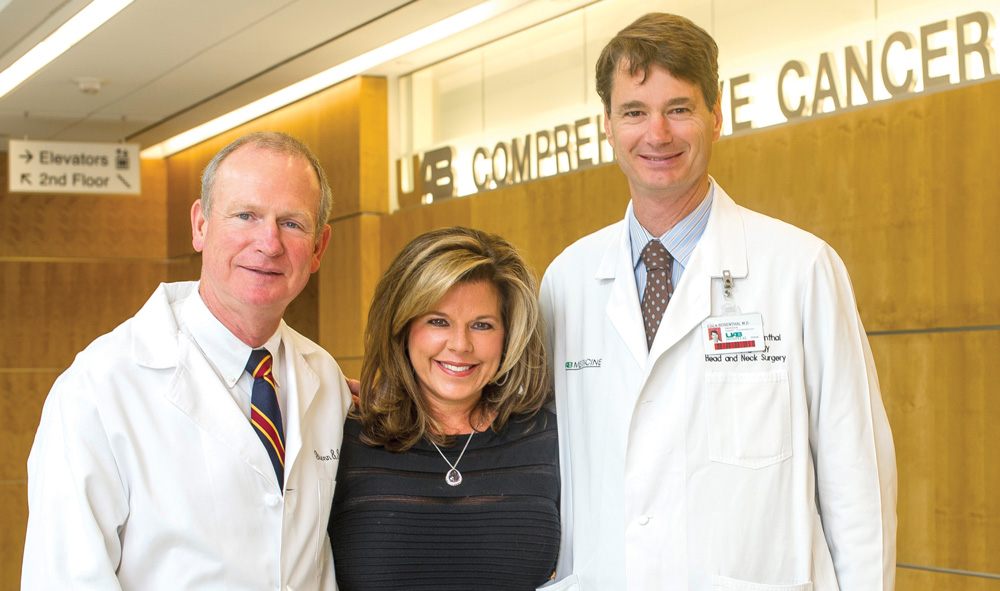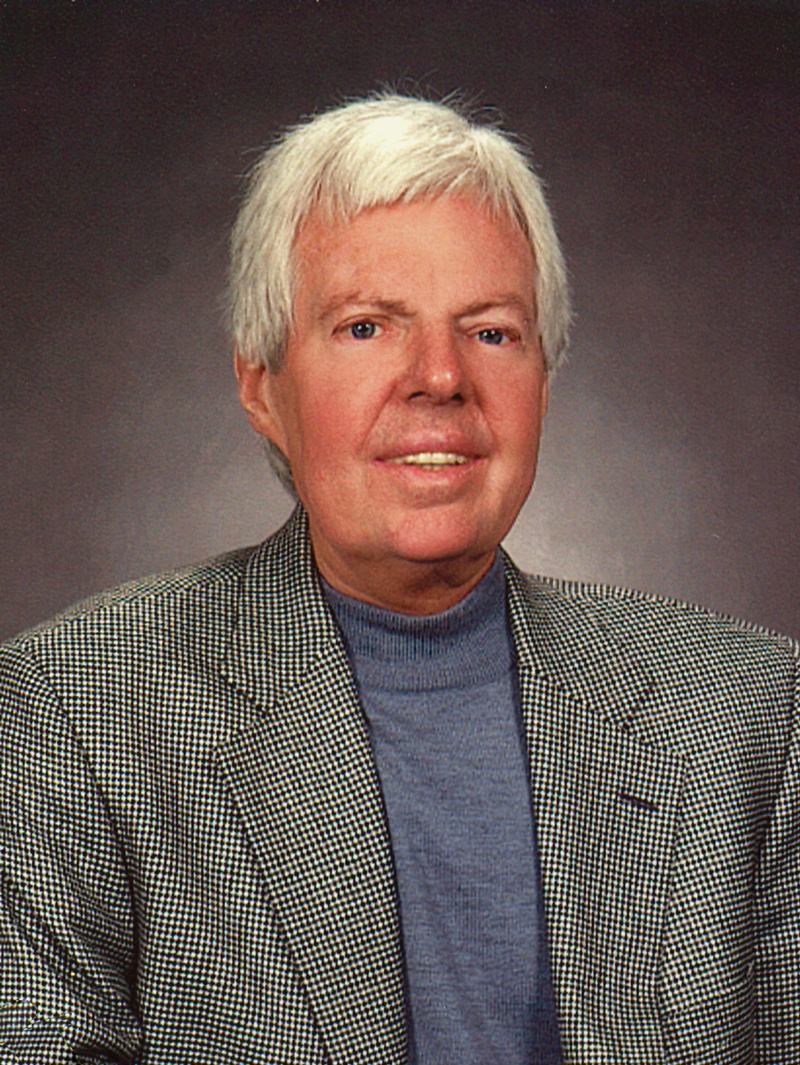 Alisa Armstrong Belcher with Glenn Peters (left) and Eben Rosenthal, two physicians who helped care for her father.Bobby Jack Armstrong’s 11-year fight against head and neck cancer ended in 2012, but the daughters of the Montgomery businessman and community leader are determined to fight their own battle in his memory. Alisa Armstrong Belcher and Julie Armstrong Reynolds recently established the Bobby Jack Armstrong Fund to honor Armstrong’s life, as well as his legacy of giving and concern for others, by helping UAB researchers improve the lives of other cancer patients.
Alisa Armstrong Belcher with Glenn Peters (left) and Eben Rosenthal, two physicians who helped care for her father.Bobby Jack Armstrong’s 11-year fight against head and neck cancer ended in 2012, but the daughters of the Montgomery businessman and community leader are determined to fight their own battle in his memory. Alisa Armstrong Belcher and Julie Armstrong Reynolds recently established the Bobby Jack Armstrong Fund to honor Armstrong’s life, as well as his legacy of giving and concern for others, by helping UAB researchers improve the lives of other cancer patients.“We also wanted to show our appreciation for the wonderful care Daddy received at UAB,” Belcher says. “We felt that we must somehow give back to UAB to help advance research that makes it better for the next patient.”
A new UAB clinical trial proved to be just the type of “bench-to-bedside” research that the Armstrong family was seeking—a project with immediate, tangible results. In the trial, directed by Eben Rosenthal, M.D., director of the UAB Division of Otolaryngology and one of Armstrong’s physicians, oncology surgeons will use image-guided surgery that illuminates cancer cells, erasing any guesswork when it comes to removing all tumor cells.
The technique involves introducing fluorescent dye into an antibody that targets malignant cells and makes them visible to surgeons in real time, says Rosenthal. Partners in the project include the UAB Department of Radiology’s Division of Advanced Medical Imaging Research, directed by Kurt Zinn, D.V.M., Ph.D., and the UAB Comprehensive Cancer Center.
 Bobby Jack ArmstrongBecause the procedure uses FDA-approved antibodies and conventional operating room imaging equipment, UAB can safely bring the technique to the clinic, says Rosenthal. He calls it “the best imaging technology for the optimal benefit of the patient.”
Bobby Jack ArmstrongBecause the procedure uses FDA-approved antibodies and conventional operating room imaging equipment, UAB can safely bring the technique to the clinic, says Rosenthal. He calls it “the best imaging technology for the optimal benefit of the patient.”The Bobby Jack Armstrong Fund’s support will provide critical funding for the clinical trial to supplement funding provided by the American Cancer Society and the National Institutes of Health.
“This type of research would have benefited our father had the technique been available in 2002,” Belcher says. “But he would be very pleased to know that by funding this important research, other head and neck cancer patients will benefit. Down the road, this technique may prove equally effective in removing breast cancer cells, colon cancer cells, and small lung cancer cells. It’s uplifting to think of how beneficial this procedure may be in the future for detecting and eliminating many types of cancer.”